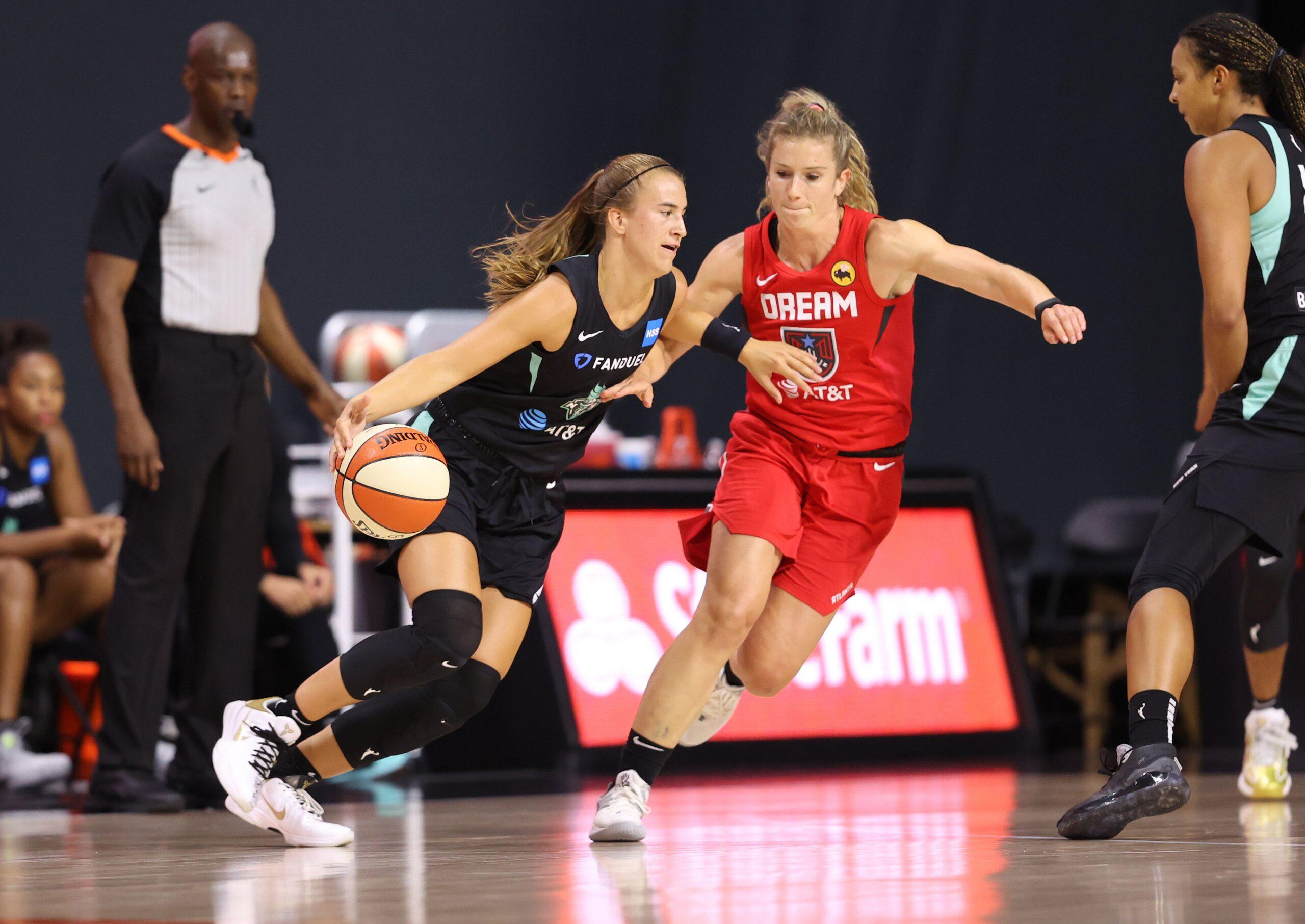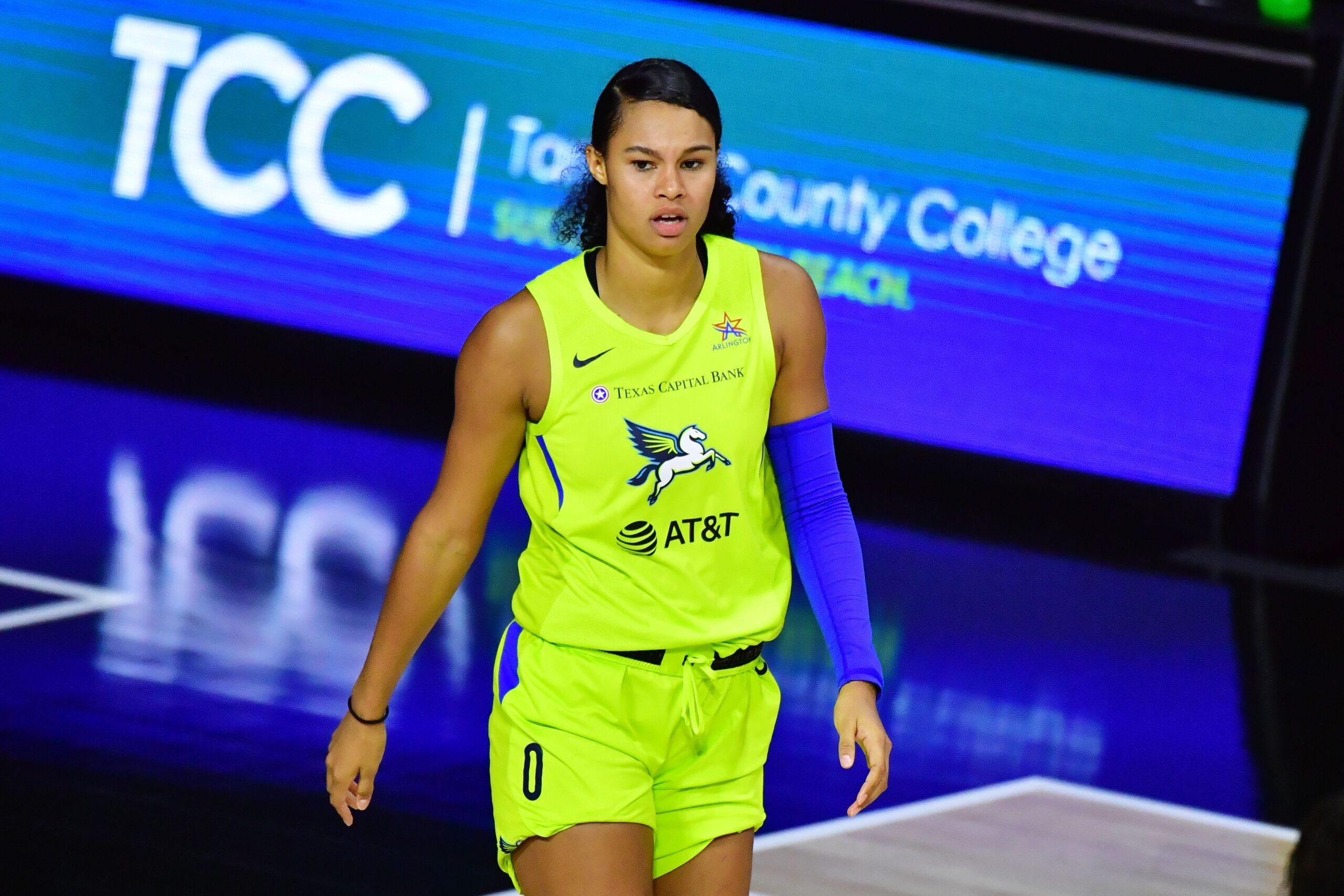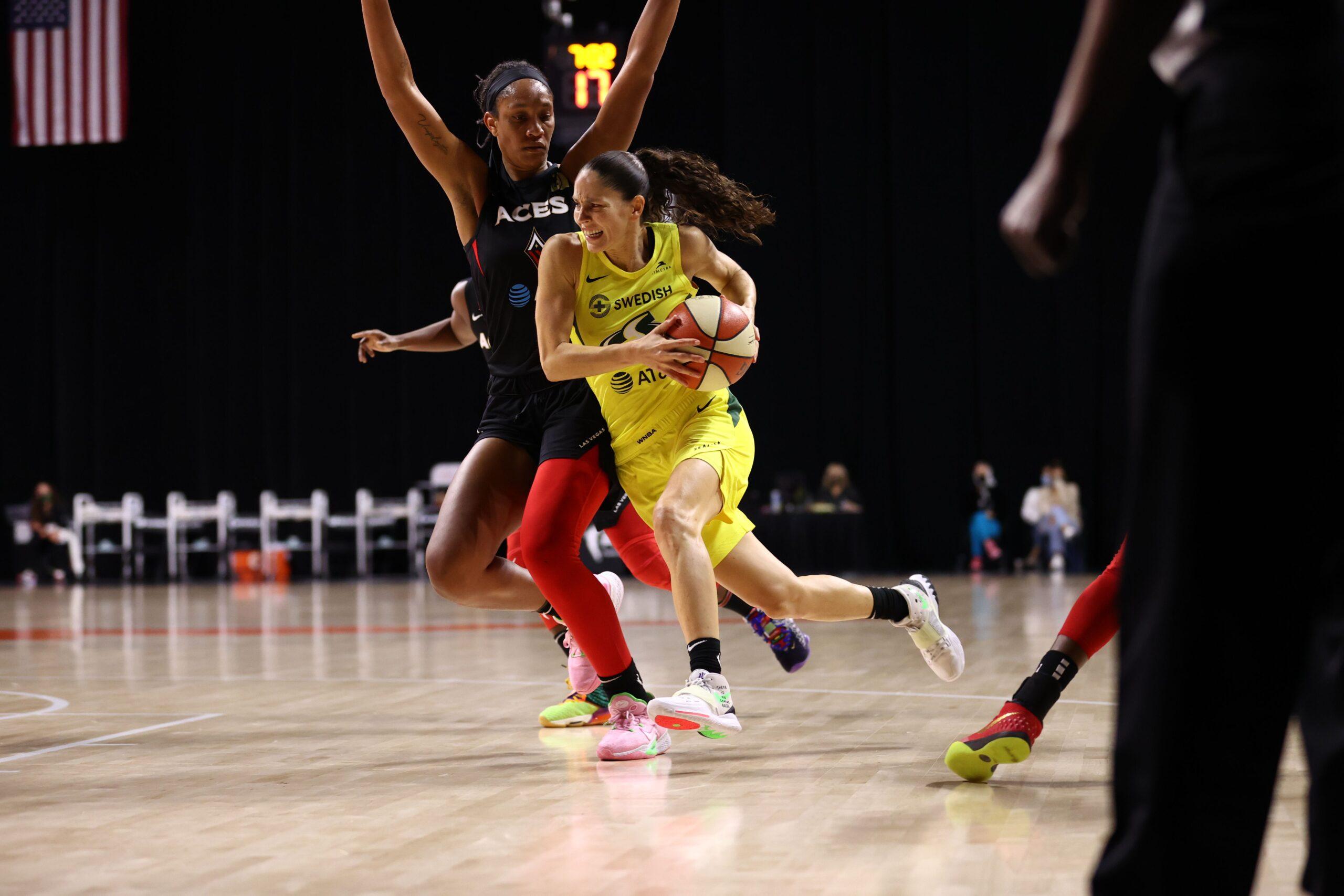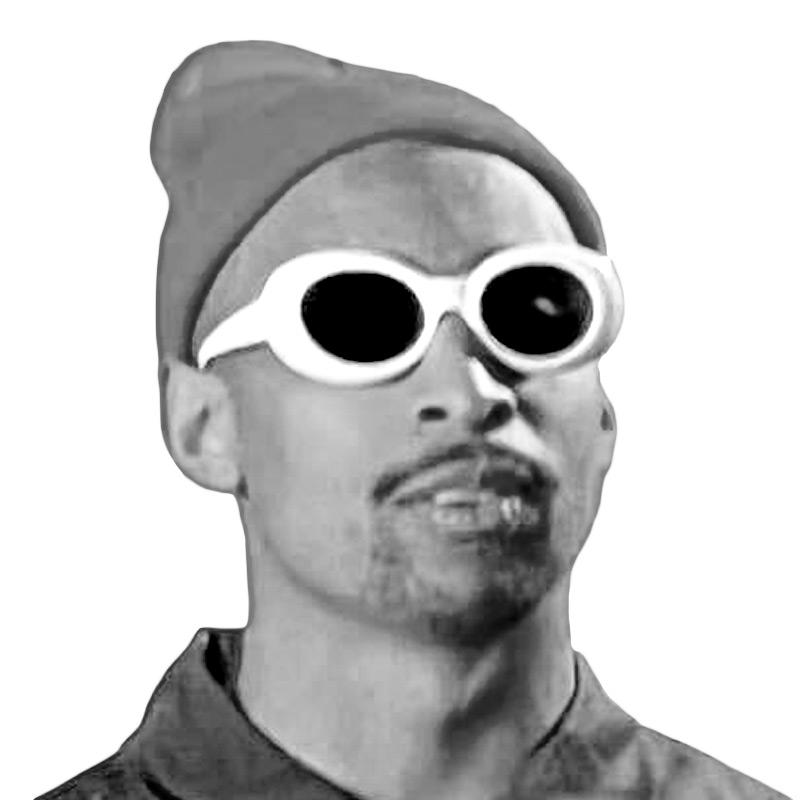The first game of the 2020 WNBA season was a meeting between the league’s past and its future. Seattle Storm legend Sue Bird stood at center court in the league bubble next to New York Liberty prodigy Sabrina Ionescu, readying to jockey for position on a jump ball. The scene was a tidy metaphor for a league in transition: one of the best guards of her generation, trying to hold off arguably the most touted rookie in league history.
After 17 years in the WNBA, Bird is still one of the league’s faces and, when healthy, one of its biggest forces. She had a record 16 assists in Game 1 of the Finals, and a double-double in Game 2. With a win on Tuesday, Bird would claim her fourth title for the Seattle Storm, tied for the most for any individual player. It’s a feat Ionescu is chasing.
There’s something like a static or electricity in the air with this young talent.Layshia Clarendon
The history of the WNBA has been shaped by a handful of drafts. Its best may have been its first in 1997, which featured future league pillars like Lisa Leslie, Rebecca Lobo, Cynthia Cooper, Sheryl Swoopes, and Tina Thompson. Seven years later, the 2002 draft brought Bird and Swin Cash. Diana Taurasi came two years later in a class that featured Lindsay Whalen and Alana Beard. In 2008, Candace Parker and Sylvia Fowles were the first two selections.
The 2020 draft may be next. Behind Ionescu, the no. 1 pick, it’s already proved to be one of the deepest in a decade, with the likes of Chennedy Carter, Satou Sabally, and Rookie of the Year winner Crystal Dangerfield all making an impact in their rookie seasons. With 24-year-old star A’ja Wilson also winning MVP last month and leading the Las Vegas Aces to the Finals opposite the Storm, the WNBA appears to be in the middle of a youth movement that could define the league for years to come.
“There’s something like a static or electricity in the air with this young talent,” said Ionescu’s teammate Layshia Clarendon.

The crown jewel of the 2020 class is Ionescu. Some call her the heir apparent to Taurasi; others compare her to Bird. Her debut against Bird averaged 419,000 viewers, making it the most-watched season opener since 2016. Three months before her debut, she signed a sneaker deal with Nike, with hopes for a signature shoe to go along with her deal with Beats By Dre; the tandem would make her the league’s most visible star before she even touched the floor. Last November, a Nike replica of her no. 20 Oregon jersey sold out within hours of its online release. By the end of her rookie season, her Liberty jersey was the fourth-highest-selling in the league, even though she played just three games due to a Grade 3 ankle sprain. Nonetheless, she’s become a face of a league on the rise, and says she isn’t burdened by the responsibility.
“I mean, that’s just how my mentality is with everything,” Ionescu said by phone last month. “Just really focusing on what I can control, being the best that I can playing, and not really focusing on all the outside noise and speculation and what everyone else is talking about.”
Kelly Graves, Ionescu’s coach at Oregon, has stories for days. He can tell you about when Ionescu committed and Nike founder and Oregon alum Phil Knight sent him a text saying, “This is a great day, not just for your program but for the entire university.” Or that time during Ionescu’s freshman year, in a game against an opponent he can’t quite remember, when he was worrying, like coaches do, over a game in the balance. Sensing her coach’s trepidation, she walked over, calmly looked him square in the eyes and said, “Coach, don’t worry. I got this,” and won the game. The six-word statement became a recurring sentiment from Ionescu. Sabally, her teammates at Oregon, blossomed into a star in her own right, and the duo became a hit in Eugene and beyond. During Ionescu’s freshman season, the women’s team accounted for just 19 percent of basketball attendance at Oregon. By her senior season, the women’s team was responsible for 58 percent of basketball attendance at Matthew Knight Arena.
Asked how her run at Oregon helped grow the game, Ionescu said, “I mean, it did in every way, shape, or form, kind of just having so much support, not only from the state and just really all over the country where we traveled. It was just awesome to see how many people were supporting us and watching us so that definitely helped.”
The team also attracted the best in the sports world. Lakers forward LeBron James tweeted his appreciation after Ionescu’s 22nd career triple-double. Kobe Bryant forged a relationship with Ionescu and brought his daughter Gianna to Oregon’s stop at Long Beach State. Graves says he was taken aback when the Ducks played that game in Southern California, in Kobe’s kingdom, and Sabrina attracted a bigger mob of onlookers.
“There was a crowd around Sabrina for a good half-hour,” Graves said. “It was a half-hour after, there were still hundreds of people around Sabrina.”
It’s hard to explain or put in words, but it’s like a feeling when you’re on the court with a player like that, everything’s going to be fine.Clarendon
Similar moments were littered throughout Oregon’s season. During her final Bay Area trip, a who’s who of figures flocked to Berkeley’s Haas Pavilion. Warriors guard Stephen Curry sat on one baseline, across from superagent Bill Duffy, who now represents Ionescu. On the other end, NBA Hall of Famer Chris Mullin sat a few rows down from Ionescu’s future coach, Walt Hopkins, to watch the Ducks beat the Bears 93-61.
“[It] was like traveling with rock stars,” Graves said. “We’d get off and there would be people at our hotel when we first arrived wanting autographs. You just don’t see that with a women’s team. And I think that’s what Sabrina brought and has brought.”
In her abbreviated stint in the “wubble,” Ionescu showed similar breakthrough potential. Clarendon saw she had “it” during preseason three-on-three practice drills by how she competed, how she went at anyone in front of her. “She doesn’t act like a rookie,” said Clarendon, an eight-year veteran. The best example of Ionencu’s promise came in her second career game, against Dallas, when she scored 33 points, handed out seven assists, and grabbed seven rebounds in a 93-80 loss. With two minutes left in the first half, she drove crosscourt and hit a tough layup over Dallas Wings forward Kayla Thornton. Twenty-four seconds later, she took an inbounds pass and threw a crosscourt dime to Kiah Stokes. Twenty-one more seconds later, she hit a 25-foot 3-pointer. At halftime, she had either scored or assisted on New York’s last 15 points.
Her value may have been more apparent when she left the bubble, as the Liberty finished as the league’s worst offensive team. Her teammates missed the calm her presence brought to the rest of the team, and the quality she shares with the players she’s often compared to.
“She brings a level of confidence to the game that honestly reminds me when I played with Diana [Taurasi] at [Team] USA,” Clarendon said. “It’s hard to explain or put in words, but it’s like a feeling when you’re on the court with a player like that, everything’s going to be fine.”

When Oregon faced off against Team USA last fall, Sabally didn’t have any expectation of winning. The Americans featured future Hall of Famers Taurasi, Fowles, and Seimone Augustus. During pre-practice, Sabally pretended to take a shot and blocked herself, then joked, “Damn, this is going to be Sylvia Fowles on me.”
Don’t get it twisted—Sabally has game. But the sport was so foreign to her growing up in Germany that she thought the name of her first club team was “defense” because that’s what they cheered from the bench. At Oregon, she blossomed into one of the best wings in the country, earning Pac-12 Freshman of the Year. And in November 2019, she turned the exhibition match against Team USA—a game designed to help the Americans prep for the 2020 Olympics—into her coming-out party; she scored 25 points and pulled down six rebounds as Oregon became the first college team to beat Team USA since 1999. “Satou was phenomenal,” Graves said. “She was the best player on the court that day.”
Sabally is now one of the driving forces for a WNBA team with dynastic potential. With the Oregon product alongside MVP candidate Arike Ogunbowale, the Dallas Wings are primed to be one of the best teams in the league soon. Both stars showed signs of promise, though their efforts weren’t enough to push Dalls into the postseason. Ogunbowale led the league in scoring, while Sabally finished third in Rookie of the Year voting. Dallas isn’t new to star duos. In 2018, center Liz Cambage signed a multiyear extension to pair with Skylar Diggins-Smith. But following their lone season together, Cambage requested a trade, Diggins-Smith was traded to the Mercury a year later, and the duo was broken up before it could realize its potential. Two years later, Sabally is more optimistic about her duo’s chances, even comparing her and Ogunbowale to the team one win away from the WNBA title.
“We see ourselves as a young Seattle team,” she said. “They have been there, and we’re there right now, and I think that we can really be contenders for the championship in three years, who knows, maybe even in two. I want that, I really want that. And I see that, because we’re so talented. And if everything just fits together—you always need a little bit of luck, but most of it is hard work, and we are all hard workers and we’re talented too. So I think that there’s a lot of great things coming from Dallas.”
Dallas’s coach, Brian Agler, is suited to guide this group toward that goal, considering he coached Bird and the Storm from 2008 to 2014. During his tenure in Seattle, the Storm made the postseason five times, winning the 2010 title as Bird emerged as one of the best guards of her generation. Now, Agler sees the current Seattle squad as the model Dallas should emulate. During the season, he would frequently allocate three or four minutes of film study to Storm footage, showing how they space the floor, how they play defense, how they screen for each other, how they bring a defender to the strong side of the floor, and, most importantly, how they approach the game.
“We did talk in that manner of, ‘OK, this is how really good teams play. And so, let’s watch and really critique what they’re doing here,’” Agler said. “‘And let’s see if we can add that to how we play the game.’”
Agler knows what it’s like to coach stars. Following his Seattle tenure, he went to Los Angeles, took over a Sparks team featuring Candace Parker and Nneka Ogwumike, and won a title in 2016. Agler believes the key to grooming stars is to be patient, and to let them work through mistakes, using every egregious turnover, shot, or mishap as a learning experience.
“You have to have vision down the road of what they’re going to be. And for those players to get to that level, reach their potential, then you’re going to have to find ways to let them play through their mistakes, leave them on the floor,” Agler said. “They’re going to have some bad stretches. They’re going to have some bad games, but you keep talking with them in regards to your vision for them and what they’re capable of doing.”
Agler’s philosophy worked in the wubble. After struggling with consistency early on in the season, Sabally averaged 19.2 points, 8.7 rebounds, and 0.8 steals in her last six games. Against Seattle, she scored 25 points, adding seven rebounds and three assists, outscoring former league MVP Breanna Stewart in a 107-95 loss. Two weeks prior, she outperformed A’ja Wilson, scoring 28 points and grabbing 11 rebounds off the bench in a 96-92 loss. Meanwhile, Ogunbowale became the league’s leading scorer and finished on the All-WNBA first team. Agler sees the same qualities he witnessed in Parker, Ogwumike, and Bird in his new crop of players.
“They don’t sweat the small stuff,” he said. “They are really in tune with their game and they work at their game and they study their game and they critique themselves. They take a lot of pride in who they are, but they don’t get caught up into little things within the team unit.”

As the new generation of talent emerges, WNBA players have more resources than their predecessors. In the latest collective bargaining agreement, the salary cap jumped 30 percent, from $1 million to $1.3 million. Maximum base salaries increased to $215,000, and players can make up to $500,000 with incentives. The CBA isn’t perfect; the league’s middle class is getting only a minimal salary increase. But including league marketing opportunities, the biggest stars can now make up to $300,000.
Because of the low salaries, most WNBA players spend their offseasons playing overseas. While the financial benefits are welcome, players don’t get the same extended breaks as their male counterparts, and the consequences could be dire to their health.
“There are W players who have to play year-round and it sucks because then you don’t see, I think, as big of the jumps as we would like to see,” said Clarendon, who doubles as the players’ association’s first vice president. “I just hate that we don’t get that summer with the dudes to just go break down and be like, ‘Oh, he came back this much better at that.’ And it’s like, ‘No, because we had to go make some decent money overseas. So we didn’t get to come back with X, Y, and Z in our game now.’”
Stewart tore her Achilles in a EuroLeague game, which forced her to sit out all of last season. Bird has undergone two major knee surgeries in the past four years, as wear and tear from jockeying between two leagues has taken its toll.
These days, Bird loves to crack on her age. When asked about her influence on the next generation, she joked that one of her primary duties “is just increasing the average age of the Storm.” But with age comes nearly two decades in the league, three championship rings, and four Olympic gold medals. Now, on the brink of her fourth title, she’s seeing her career come full circle as a mentor.
“That’s kind of the beauty of the WNBA,” Bird said last month. “I’m kind of that older player and, one day Sabrina will probably be like, ‘Oh yeah, I played against Sue Bird.’ And then it’ll be like, ‘Damn, you played against Sue Bird?’ Because it’ll be old at that point.”
